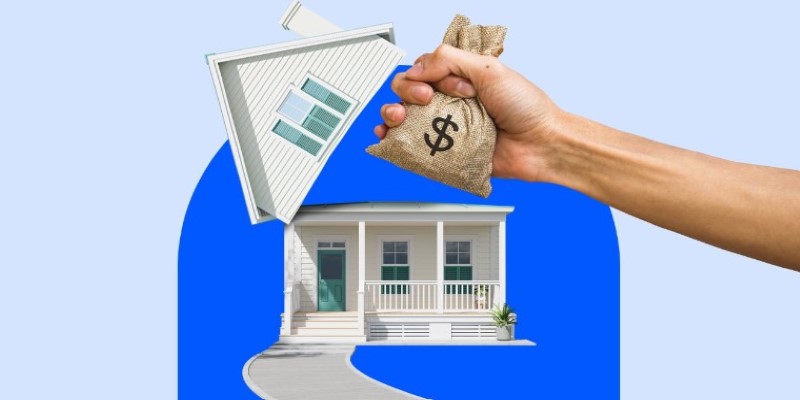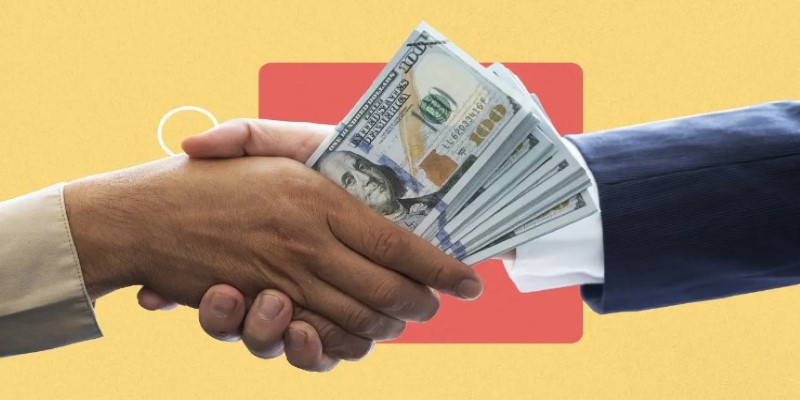Mortgage Refinancing Without a Down Payment: Is It Possible
Oct 26, 2024 By Elva Flynn
Refinancing your mortgage can feel like hitting the reset button on your home loan, offering a chance to snag a better interest rate or more manageable payments. But, like many homeowners, you might be wondering: do you need a down payment to refinance? The good news is that refinancing doesnt usually require the upfront cash you needed when you first bought your home.
However, the answer isn't always black and white. Whether you're looking to lower monthly payments or tap into your homes equity, understanding the ins and outs of refinancing in 2024 can help you make a smarter financial decision.
What is Mortgage Refinancing?
At its core, refinancing involves replacing your existing mortgage with a new one, ideally under more favorable terms. Homeowners usually consider refinancing to take advantage of lower interest rates, reduce monthly payments, or adjust the loan duration. The process typically includes applying for a new loan, providing documentation, and paying any associated fees. Unlike buying a home, where a down payment is standard, refinancing can offer different paths regarding down payment requirements.
Understanding Down Payments in Refinancing
When it comes to refinancing, many homeowners wonder about the necessity of a down payment. The answer often depends on several factors, including the type of refinancing you're pursuing and the equity you have built in your home. Generally, when refinancing, you do not need to make a down payment as you would with a new mortgage. Instead, the equity in your home plays a crucial role in the refinancing process.

Equity is the difference between your home's current market value and the amount you owe on your mortgage. If you've been paying your mortgage for a few years, you may have significant equity, which can work in your favor during refinancing. Lenders often allow homeowners to refinance without a down payment, provided they have at least 20% equity in their home.
Different Types of Refinancing Options
Refinancing options can vary significantly based on the type of loan you are looking to refinance, your financial situation, and your goals. Here are some common types of refinancing options:
Rate-and-Term Refinance
A rate-and-term refinance is one of the most common refinancing options. This approach allows homeowners to secure a lower interest rate or alter the loan term without needing a down payment. As long as your home's equity meets lender requirements, you can proceed without upfront cash. If you owe less than 80% of your home's value, you are often eligible for better rates and terms, making this option appealing to many.
Cash-Out Refinance
A cash-out refinance is another popular choice, allowing homeowners to borrow more than they currently owe on their mortgage. In this scenario, the excess amount is given to the homeowner in cash, which can be used for various purposes, such as home renovations or debt consolidation. While a down payment isnt usually required for this type of refinance, you will need to have sufficient equity to qualify. Lenders typically allow you to borrow up to 80% of your homes appraised value in a cash-out refinance, so having at least 20% equity is essential.
FHA Streamline Refinance
The FHA streamline refinance option can be particularly beneficial for homeowners with an FHA loan. This program is designed to simplify the refinancing process and doesn't require a down payment. It allows borrowers to refinance without verifying income or undergoing a credit check, making it an attractive option for those looking to lower their payments quickly. However, the FHA does require that homeowners have an existing FHA loan to qualify for this program.
VA Refinance Options
Veterans Affairs (VA) loans also offer refinancing options for eligible veterans. VA loans do not require a down payment, and this applies to refinancing as well. The VA Interest Rate Reduction Refinance Loan (IRRRL) allows veterans to refinance their existing VA loans without needing a down payment or additional credit verification. This option is designed to make refinancing easier for veterans, providing access to better interest rates and terms.
The Benefits and Drawbacks of Refinancing Without a Down Payment
Refinancing your mortgage can be a smart way to reduce monthly payments, access home equity, or switch loan terms. Often, homeowners worry about whether a down payment is required, but in many cases, especially if you have enough equity, a down payment isnt needed. Lets break down the key benefits and drawbacks of refinancing without a down payment.
Benefits of Refinancing Without a Down Payment
Lower Monthly Payments: One of the main reasons to refinance is to lower monthly payments. If you can secure a better interest rate without needing a down payment, it immediately eases your financial burden.
Access to Home Equity: A cash-out refinance allows you to borrow against your homes equity without upfront cash. This can provide money for home improvements, debt repayment, or other financial needs.
No Immediate Cash Requirement: Refinancing without needing to save for a down payment allows you to take advantage of better loan terms without having to gather a lump sum of cash.

Drawbacks of Refinancing Without a Down Payment
Higher Interest Rates: Refinancing without equity or with poor credit can result in higher interest rates, which can reduce overall savings.
Closing Costs: Refinancing involves closing costs, and while a down payment isnt required, fees like appraisals and title insurance still apply.
Increased Loan Balance: Refinancing without a down payment, especially in a cash-out scenario, increases your loan balance and the amount of interest youll pay over time.
Conclusion
Refinancing your mortgage without a down payment is often possible, especially if you have sufficient home equity and a good credit score. While there are potential benefits, such as lower monthly payments and access to cash, it's essential to carefully consider any associated costs, like higher interest rates or closing fees.
Understanding your financial situation and exploring various refinancing options can help you make the best decision for your long-term goals. Always consult with a mortgage professional to ensure the right fit for you.








